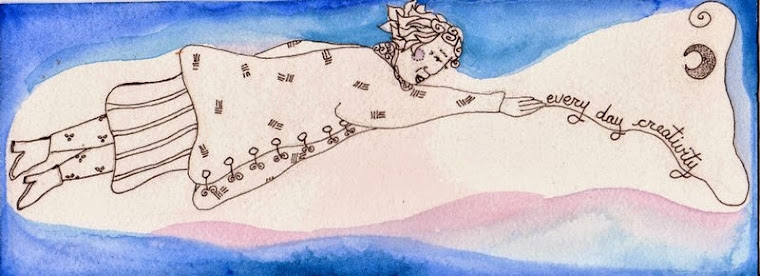
I was asked to give a talk at a conference. The theme of the conference is on developing business skills for artists. I was flattered to be invited as truth be told, I don't consider myself very high up on the ladder of business skills. In fact, in some ways, I am abysmally poor at pulling together the practical elements in my life. But nevertheless, I was invited to speak and it certainly got me to thinking about success. Others may or may not consider me successful in terms of my career as an artist, but the true question is: 'do I see myself as successful?' If I have more than ten people visit my blog in a day, does that define success? If I have a minimum of one play a year produced, is that the definition? Is it a matter of keeping my head above water or is it a matter of thriving? What is it and who decides? Well me, of course. I decide. If I say that one person visiting my blog each year and growing a small garden of rhubarb and keeping on top of my bills defines success, then so be it! And the nice part about it is, whose going to argue with me? My husband has often said "the secret to success is to lower your standards". And though people often chuckle when they hear this, there is a grain of truth to it. But maybe it's not so much lowering standards, as keeping them very flexible.
Well enough, preamble. The following are my ten tips. Hope someone finds them useful. They took thirty-five years to write, after all.
Vision and Reality: The Ever-Changing Landscape of an Arts Practice: Ten Tips by Eleanor Albanese
1) Nurture mentorships; both formal and informal. Be open to intergenerational relationships. There is so much an established artist can benefit from an emerging artist and the reverse is also true. Look to people whom you admire in your field and see if there is potential for working together or hanging out together in a mutually beneficial manner.
2) Don’t wear your knuckles out banging on closed doors. Go where you’re wanted and/or needed. Sometimes we’re so focused on the closed doors that our energy is being depleted with frustration.
3) Give the same quality of work to the low-profile engagements that you would give to high-profile engagements. You never know what growth and good can come out of these ‘humble’ projects. Numbers is not always reflective of the success of a project.
4) Enter each project with the mind of a learner. Be curious. Ask questions. Take time to reflect on what the learning is and try to incorporate that learning into your vision for the future.
5) Everything is worth weighing, considering (and sometimes throwing out the window). Criticism is never easy to absorb, even when it’s offered constructively. As a sensitive person, it may be difficult to get past the initial shock of receiving a blow. A playwright once told me that she reads every review, even the negative ones. She felt that, even if she did not agree with the criticism, there was always one tiny grain of truth to be drawn from it. (Personally, I stay away from the negative reviews but I did appreciate her perspective.)
6) Spend a set minimal amount of time each day engaged in your artistic practice. This will help to keep you current and responsive to the ever-changing arts and culture climate. At certain points in your life, you may be able to give more or less time to your arts practice. However, that minimum daily commitment will keep you connected and alive.
7) Know where your inspiration comes from. And keep a steady stream of it filtering into your life. If you need to be out in nature, then be in out nature. If you need to have late night conversations with friends, then have late night conversations with friends. And be open to that source of inspiration changing, as it very likely will over time.
8) Know what it is you will not compromise in your arts practice. Know your bottom line. It’s a matter of integrity. An artist’s approach to making a living if often different than that of a pure entrepreneur. Though both work toward success, artists need to keep their creative process and works intact. This means something different for every artist. The popular expression “sell out” is a very real phenomenon and by the way, not limited only to the art world. Self-awareness can be an artist’s saving grace.
9) There is no formula to success because success is how you define it. If you define it in such a way that it becomes impossible to achieve, then you may end up feeling like a failure. Or, conversely, an artist may achieve ‘success’ in the world, but has compromised something else of value such as health or family life and so on. Success is not a straight-forward thing. In fact, most of the time “success” happens in such an organic way that we don’t even recognize it.
10) Set goals each year. In goal-setting, include aspects of life other than artistic. That way, the goals you set will be balanced with everything else of importance to you. And if you don’t accomplish a goal one year, there’s always next year!

As you can see, I've also included two photographs of the balcony landing a few weeks ago when all the blossoms had dropped. It was so beautiful, almost like snow. For me, that's a creative moment; the moment of seeing those petals.








